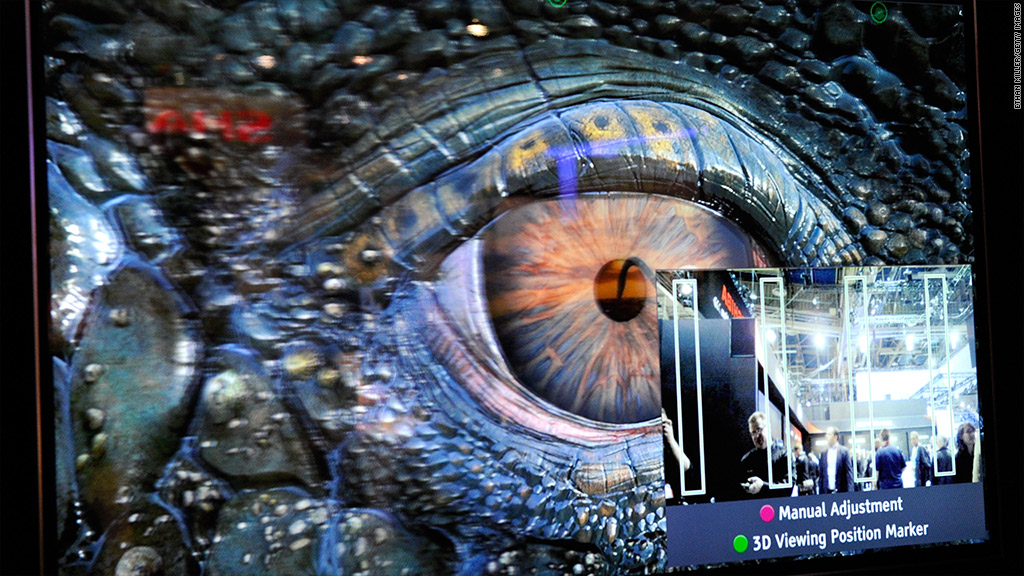
3-D TV as we know it is dead.
At this year's Consumer Electronics Show in Las Vegas, TV manufacturers almost universally eliminated the 3-D feature from their sets. No one wants to wear dorky-looking glasses while watching TV, and even if they did, few broadcasters were airing quality 3-D entertainment.
But there might still be a future for 3-D TV yet.
The next big hope for the much maligned technology is glasses-free 3-D. It started as a demo at CES in 2012, and over the next 12 months made its way into working prototype TV sets made by Vizio and other big TV manufacturers
The benefits of glasses-free 3-D TV are obvious; no glasses to worry about, which mean fewer issues for watching 3-D movies with groups and fewer (literal) headaches.
Dolby (DLB) says we should start seeing glasses-free technology make its way into television sets in early 2015. The technology has improved enough that picture quality is satisfactory, if not quite flawless. And more affordable 4K ultra-high definition televisions mean TVs can finally display 3-D content in full HD resolution (3-D can only be displayed at half the normal resolution of any TV).
Related: Get ready for 'over the top' TV

But there are the inevitable tradeoffs as well. The technology used for glasses-free 3-D requires a film overlay that degrades image quality -- regardless of whether you're watching 3-D content or not. To compensate, glasses-free 3-D TVs usually come with a filter to preserve the image quality, but that causes the picture to be noticeably darker.
Roland Vlaicu, Dolby's head of technical marketing, says that future glasses-free 3-D TVs will come with an on/off switch for the filter, but it's currently too expensive to add that option in current TVs.
Even if the technological and visual barriers can be overcome, do people care about 3-D enough to bother?
Dolby thinks so -- but it will take some time. The company expects the first wave of sets to catch on in China, where the current crop of 3-D TVs are very popular. Dolby believes that popularity will spread to the United States, even though they have shunned the technology so far.
"I think consumers felt burned by the first wave of 3-D TVs," said Vlaicu at a Dolby event last month. "It's going to take some quality products and a bit of time to get them back on board."
If these forthcoming glasses-free TVs can't convince the masses, chances are nothing can.

